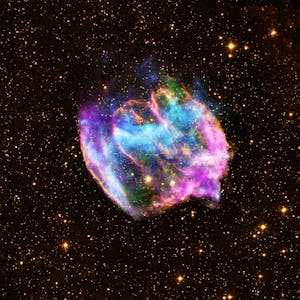Embark on a captivating journey through the cosmos with the "Analyzing the Universe" course. This comprehensive program, offered by Rutgers the State University of New Jersey, utilizes publicly available data from NASA to unravel the enigmatic world of astronomical x-ray sources. Over the duration of the course, you'll delve into the intricate workings of neutron stars, black holes, quasars, and supernovae, gaining profound insights into their energy spectra and time series data. Through the use of the imaging tool DS9, you'll immerse yourself in the diverse and enthralling realm of x-ray astronomy, exploring actual satellite observations that have shaped our understanding of the universe over the past 50 years.
Each week, you'll unravel a different facet of x-ray astronomy, beginning with an introduction to image formation and the utilization of DS9. With an emphasis on hands-on learning, you'll work with authentic data, mirroring the experiences of astronomers as they made groundbreaking discoveries. From periodic binary x-ray sources to extragalactic phenomena, this course offers a unique opportunity to appreciate the excitement and significance of astronomical revelations.
Certificate Available ✔
Get Started / More Info
Immerse yourself in the captivating "Analyzing the Universe" course modules, which cover topics ranging from the nature of images and astronomical data to stellar evolution, orbits, and cosmic recycling centers.
Delve into the nature of images and introduction to DS9, setting the stage for your exploration of x-ray astronomy. Gain a comprehensive understanding of image formation and the perception of images, and kickstart your hands-on learning journey with actual satellite data.
Week two invites you to explore basic astronomical data and delve into a DS9 smorgasbord. Uncover the fingerprints of stars through atomic spectra and gain insights into the cosmic distance scale, all while honing your skills with DS9 and astronomical data.
Week three focuses on stellar evolution and white dwarfs. From understanding the HR Diagram to an in-depth analysis of GK-Per and white dwarfs, this module offers a comprehensive exploration of stellar phenomena.
Module four delves into orbits, gravity, and the concept of clocks in the sky. Explore the intricacies of orbits, gravity, and the Doppler shift, and unravel the significance of clocks in the sky through engaging analyses of Cen X-3 with Exosat and Chandra.
Uncover the cosmic recycling centers in week five, delving into supernovae and their role as cosmic recycling centers. Gain insights into Cas-A, "color it X-ray," and immerse yourself in an in-depth exploration of these intriguing phenomena.
Week six takes you to the ends of the universe with a comprehensive journey through quasars, 3C273, and beyond. Explore the cosmic distance scale, and gain a deeper understanding of these celestial entities, culminating in a captivating conclusion to your astronomical odyssey.
This specialization offers a comprehensive foundation in electromagnetism and circuits, preparing learners for introductory physics courses and more advanced studies....
Introdução ao Inkscape é um projeto guiado que ensina a criar e editar imagens vetoriais, desenhar formas geométricas, alinhar objetos e escolher estilos de...
Space is Everywhere is the final course of a specialization exploring the influence of space in various aspects of human life. Dive into engaging discussions about...
This course delves into the study of electromagnetic fields and waves, encompassing topics such as constant magnetic fields, electromagnetic induction, and alternating...